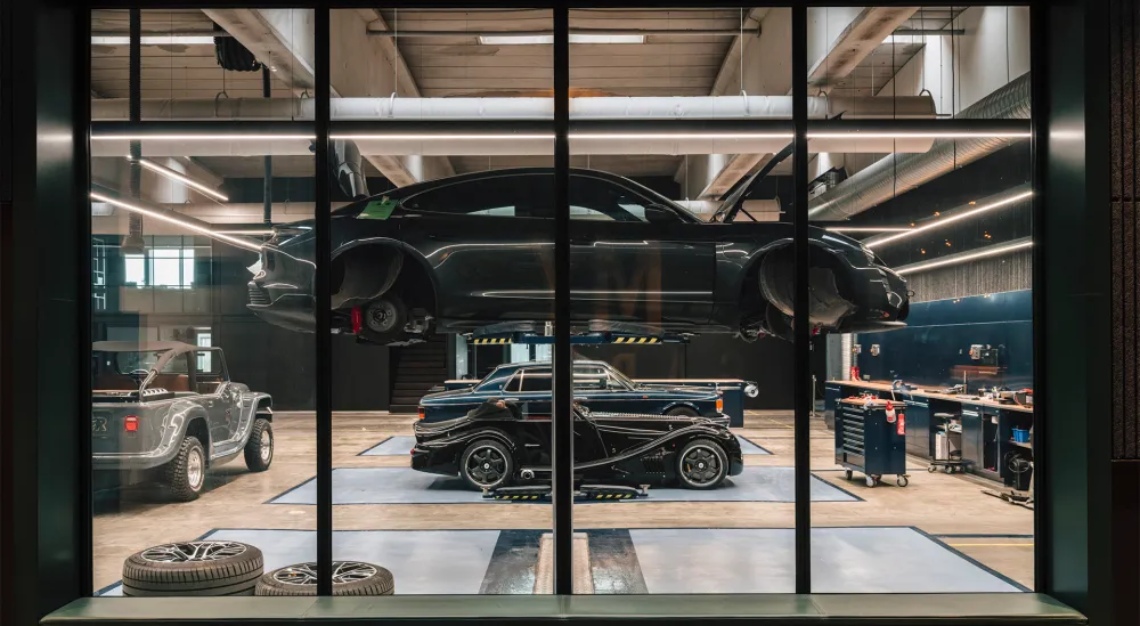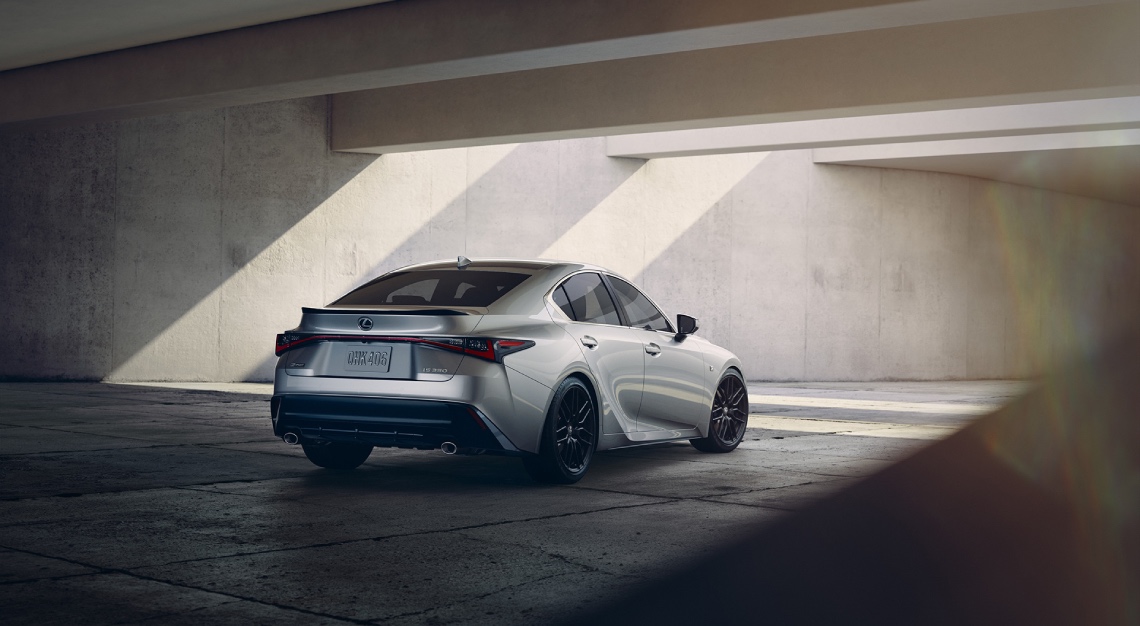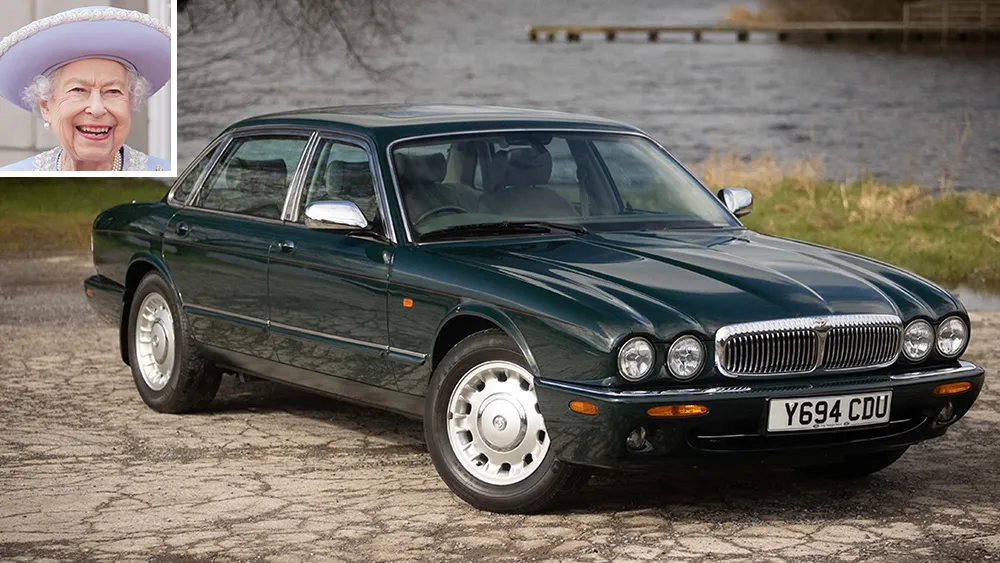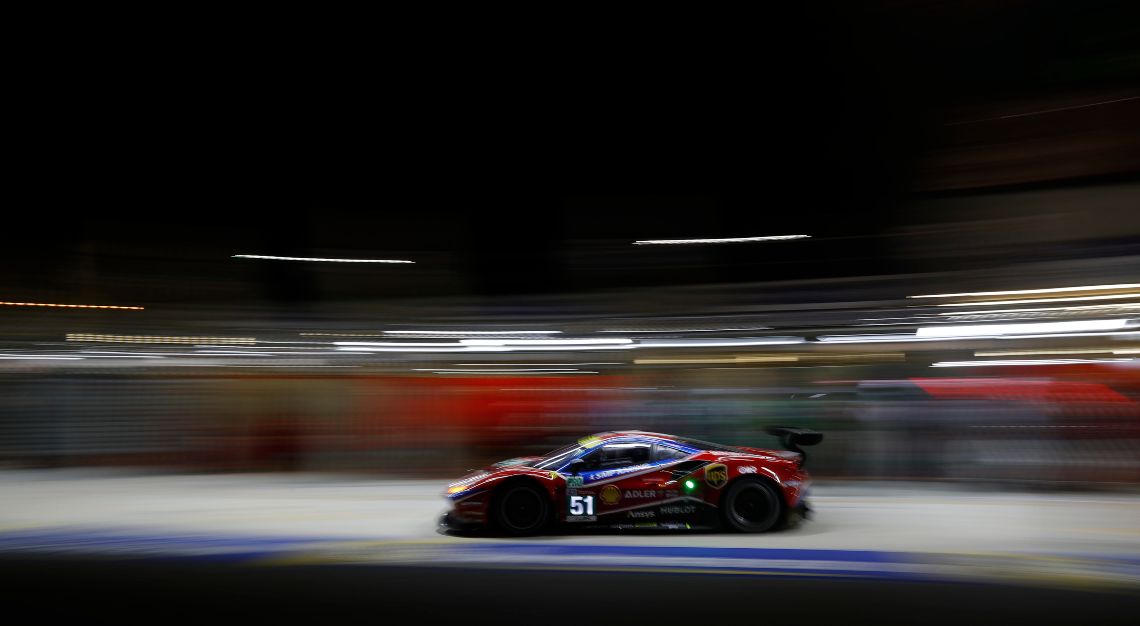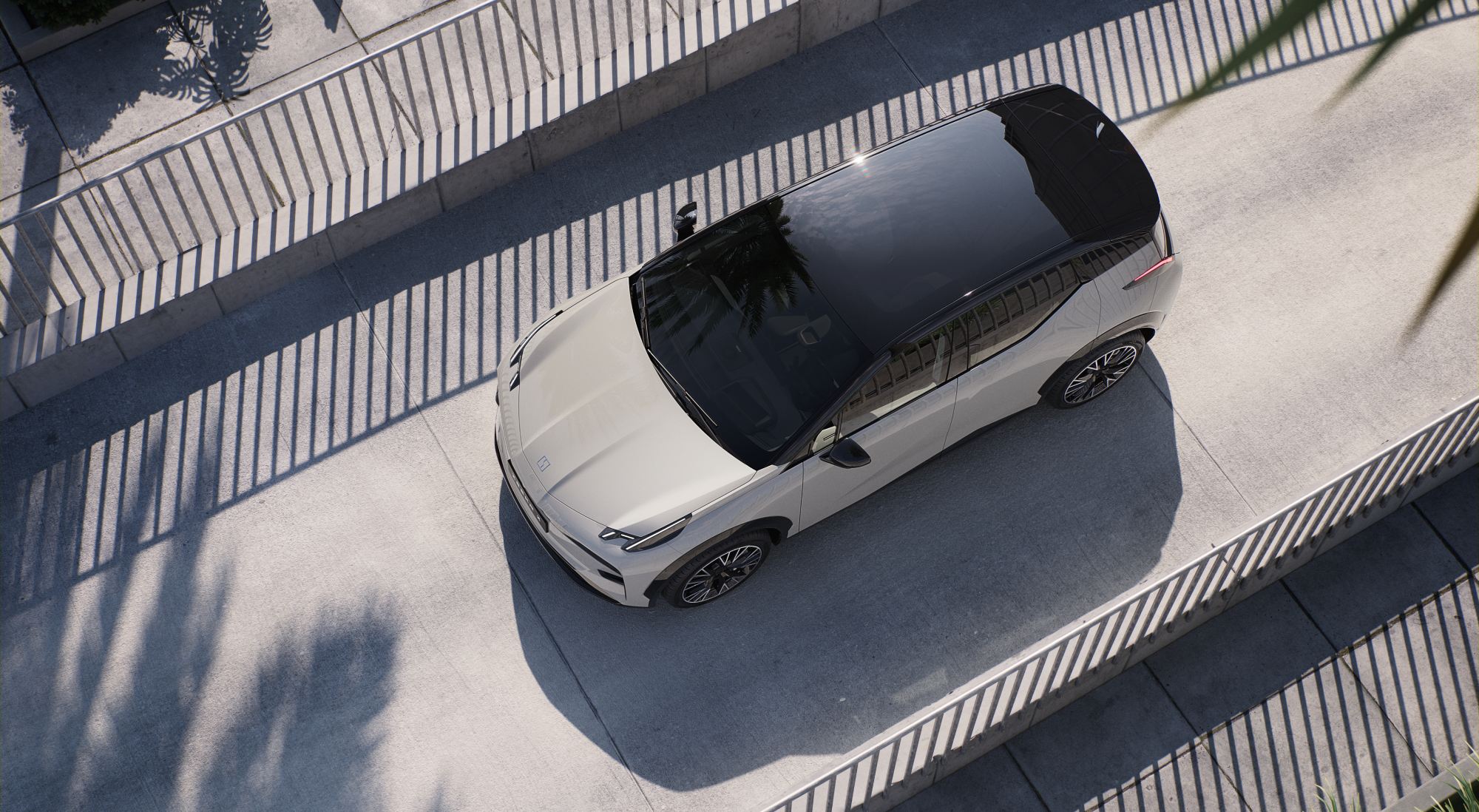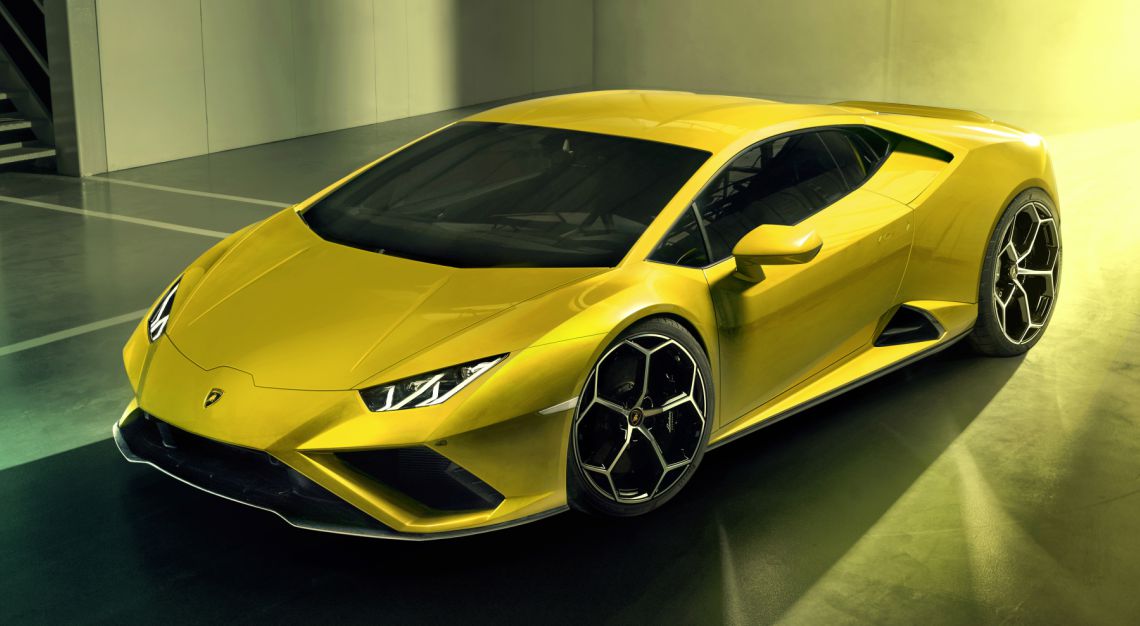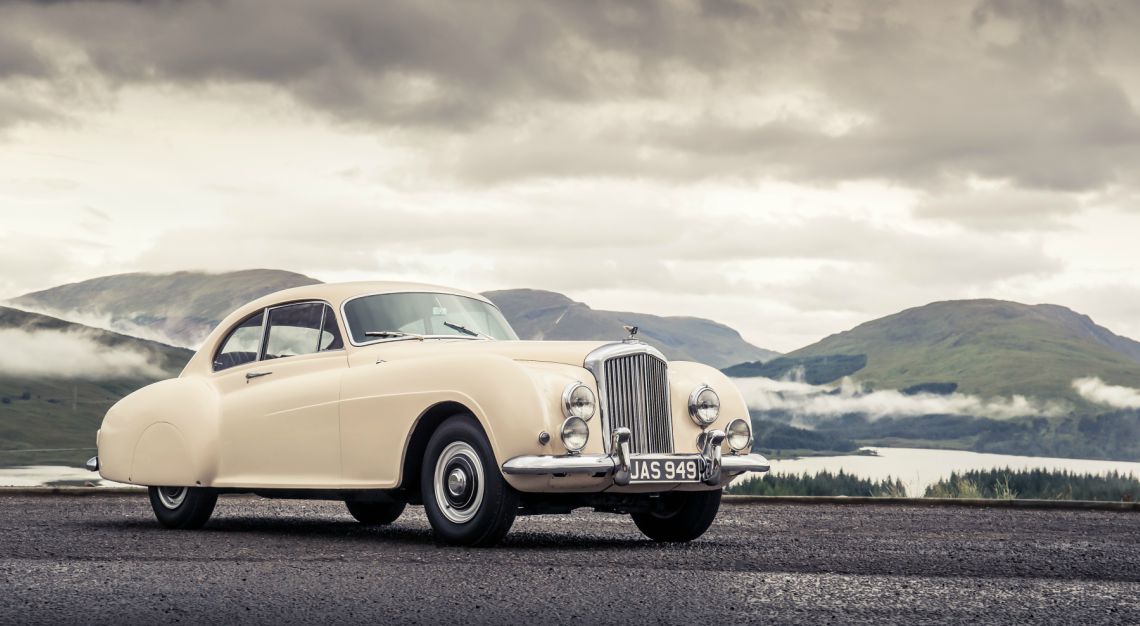Anders Kirk Johansen is one of Godtfred Kirk Christiansen’s grandsons and the founder of My Garage. Here’s what he’s doing different
Denmark is not the friendliest nation to the car enthusiast. The highway that leads you away from Billund Airport toward the small city of Vejle runs through vast fields of piercingly bright, sharp-yellow rapeseed flowers broken only by occasional wooden farm buildings painted in the distinctive, flat red so redolent of southern Scandinavia. The road is pan-flat, arrow-straight, perfectly surfaced, and largely empty, but if you’re tempted to indulge in a harmless burst of acceleration, remember that Denmark’s relatively low speed limits are ruthlessly enforced. If you’re caught doing twice the maximum, or over 200 km/hr, or if your driving is considered reckless, your car can be confiscated and sold, the loss made all the more galling by the fact that, if you’re a Danish resident, you’ll already have paid the eye-watering 150 percent luxury-vehicle-registration duty that turns even an entry-level Porsche 911 into a US$300,000 transaction. If the state auctions your car, you don’t even get a refund on that tax.
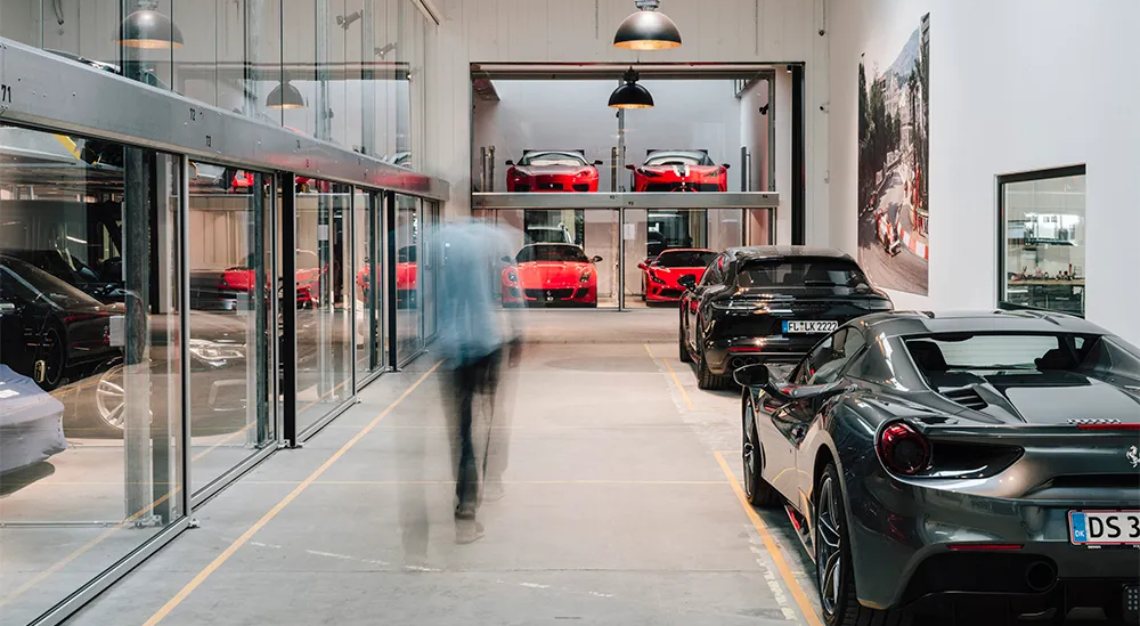
Flashy rides and other conspicuous displays of wealth are not a Scandi thing, Swedish hypercar-maker Koenigsegg being a rare outlier. The region’s auto industry, confined to Sweden, has long focused on quality and longevity rather than image, and Scandinavians were the among the earliest and most enthusiastic adopters of electric vehicles. So it’s odd to be traveling here to visit an enterprise that unites, under one expansive roof, businesses and workshops offering almost everything the high-end-car collector needs—sales, storage, maintenance, repairs, and race-car preparation—along with the stuff they’re likely to want, including a Realtor, a fine-wine merchant, and a diamond broker.
Petrolheads in any other country would kill for a facility like My Garage. But why, you wonder as you drive through Jutland’s flat, rural expanse, amid a local car fleet made humble by that heavy tax, was it established here? And can the area support a concern that seems better suited to the fabled car culture of, say, Los Angeles?
In truth, My Garage is clearly flourishing, and is set to expand both here and to new locales friendlier to the fast car than Denmark. It owes its existence—and address—to the fact that this area is also home to the world’s largest tire manufacturer, though not in the way you might think. In 1891, Ole Kirk Christiansen was born into poverty near Billund, where the airport now stands. He became a carpenter and began to make wooden construction toys, naming his company after a portmanteau of two Danish words meaning “play well”: Lego. His son Godtfred developed the plastic bricks we know today. They proved popular, and in 2015 Lego overtook Mattel as the world’s largest toymaker and was named by global consultancy Brand Finance the world’s strongest brand, besting Ferrari. The business has annual sales of nearly US$10 billion and earnings over US$2 billion, and is still privately owned by some of Ole’s heirs, many of whom live on estates close to where he was born. Lego’s tire-making record is a by-product of its colossal scale as a toymaker, Guinness World Records not distinguishing between miniature and full-size tires. About half of Lego’s kits include tires, and the company produces well over 300 million tiny wheels each year.
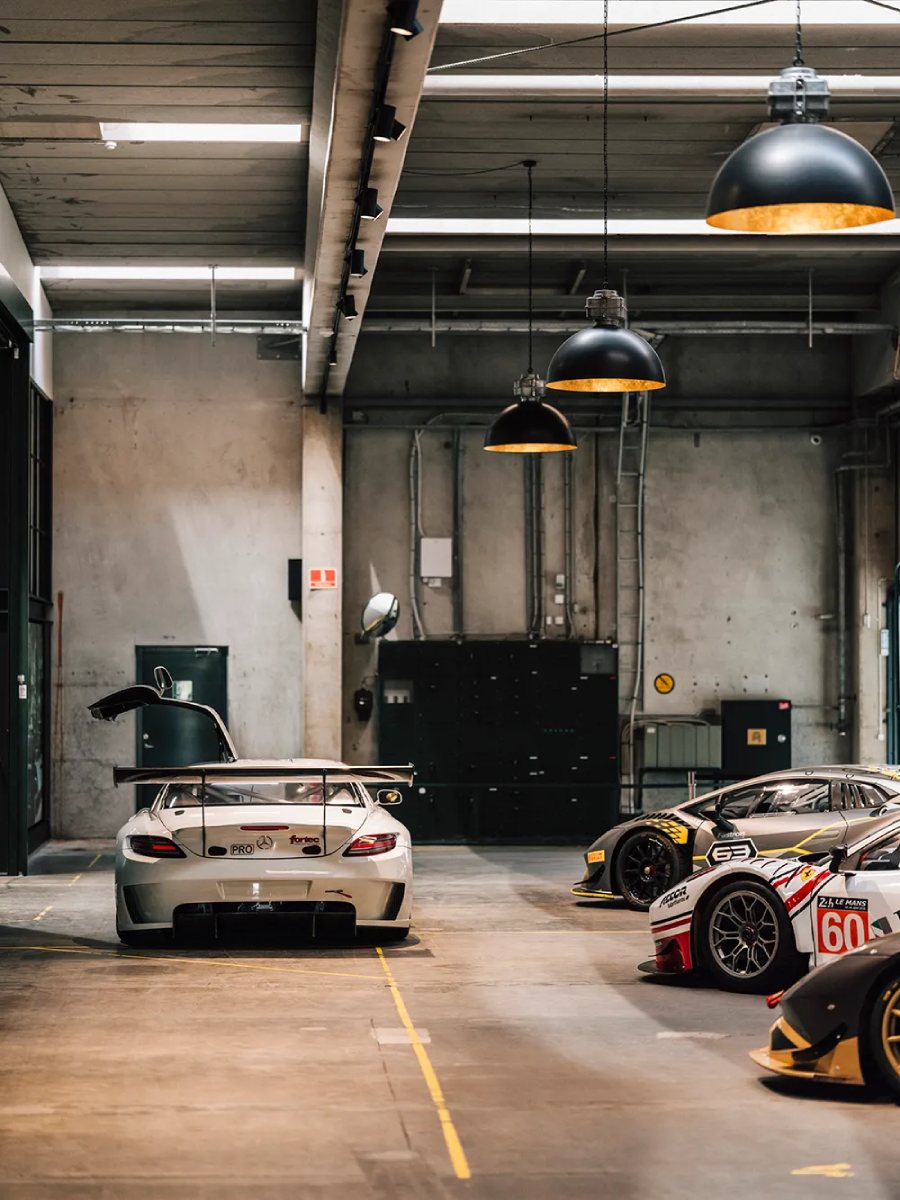
Tall, patrician, and permanently attended by Pippi, his Old Danish Pointer, Anders Kirk Johansen is one of Godtfred’s grandsons and the founder of My Garage. Many people inherit some Lego from their parents or older siblings; Kirk Johansen, along with Godtfred’s other descendants, inherited Lego when his grandfather died in 1995. (His side of the family sold its stake in 2007.) He also inherited his love of cars from Godtfred, who amassed an impressive collection but, with typical Danish modesty, piloted a humble Mini for 20 years as his daily driver.
“He built the airport you just flew into,” Kirk Johansen tells me. “When the company needed a bigger plane, we started storing his cars in the hangar we kept the old one in. But it was about half an hour’s drive from where we lived, and when we got there, sometimes the cars wouldn’t start, or we couldn’t get them out. So we needed something better.”
In the late ’90s, Kirk Johansen was establishing his own car collection, but rather than the supercars you’d expect a young heir to buy, he began with surprisingly mature choices. First came a Cadillac Brougham (“which wasn’t very good”) and then, when he was just 22, a 1967 Lincoln Continental, one of the best-looking cars America has ever made, which he still owns.
Another unusually adult purchase came at 27, when, instead of a downtown penthouse, he acquired Rohden Gods, a vast estate outside Vejle, with farmland, forests, and a mile and a half of private coastline. It’s everything you’d imagine of the country home of one of Denmark’s wealthiest men, whose wedding was attended by the country’s crown prince and princess. The long driveway to the palatial, 120-year-old main house is flanked by monumental sculptures and perfectly box-cut topiary trees set in white gravel raked into neat, zen-like rows. If you’re late for a meeting with Kirk Johansen, his bell tower will expose you when it tolls the hour.
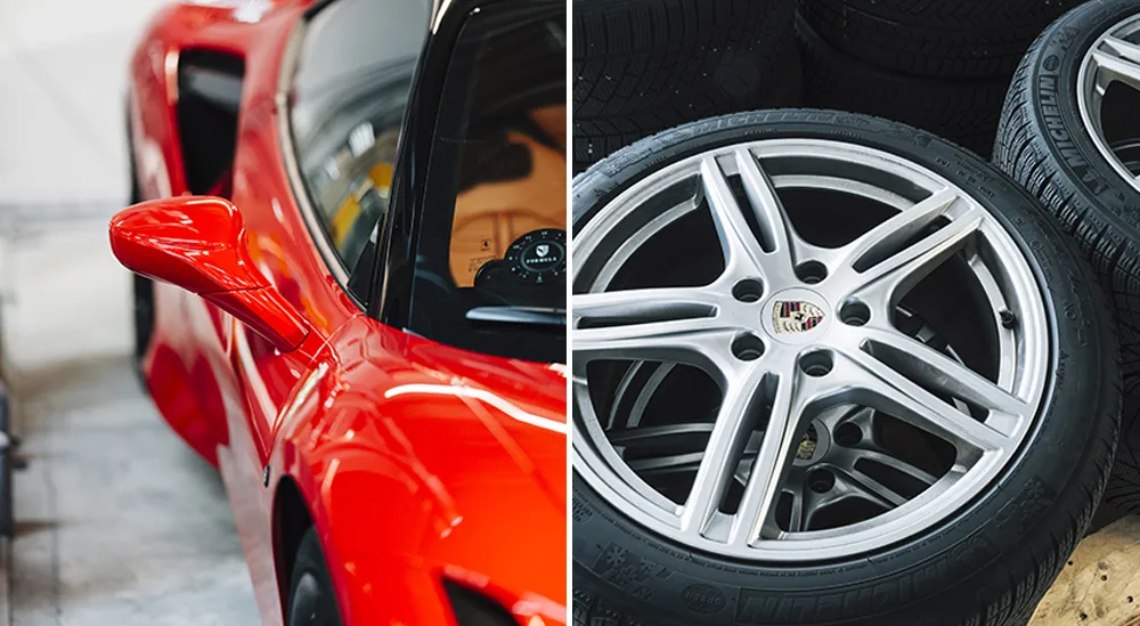
“Together with my father and brothers, we wanted to have somewhere to store and display our cars properly,” Kirk Johansen says. The result is the extraordinary two-story “motor house” in which we’re speaking, created from a massive old cowshed behind the house. On the ground level, a banked oval wooden racetrack—purely decorative, sadly—is set into the marble floor. There’s a 20-seat boardroom table, groups of Egg chairs by the master of Danish design Arne Jacobsen (clad in the room’s signature green leather), and an island bar with a Rolls-Royce Pantheon grille as the door to the central serving area.
Arranged around the track are cars from the family’s collection, including some of Kirk Johansen’s own: a bespoke Lamborghini Aventador 780-4 Ultimae Roadster and the Lauge Jensen Viking motorcycle he created with Danish car designer Henrik Fisker. (Kirk Johansen bought the Lauge Jensen business in 2012.) Set into the marble underfoot are glass panels revealing the main garage below, which is large enough to let you swing the doors wide open on any of the 30 or so cars it houses and drive straight out, without shuffling anything out of the way.
Trust us when we say it’s every car buff’s fantasy, though we can’t show it in its entirety because, with that famous Danish unpretentiousness, members of Kirk Johansen’s immediate family prefer not to reveal which vehicles they keep here. Kirk Johansen, though, is happy to share his own collection with Robb Report. And it’s quite the trove, displaying the charming eclecticism of a true aficionado rather than the rote predictability of a showy spender—someone just as excited by the mechanical marvels of big farm equipment as by the latest hypercar, super-luxury sedan, or SUV.
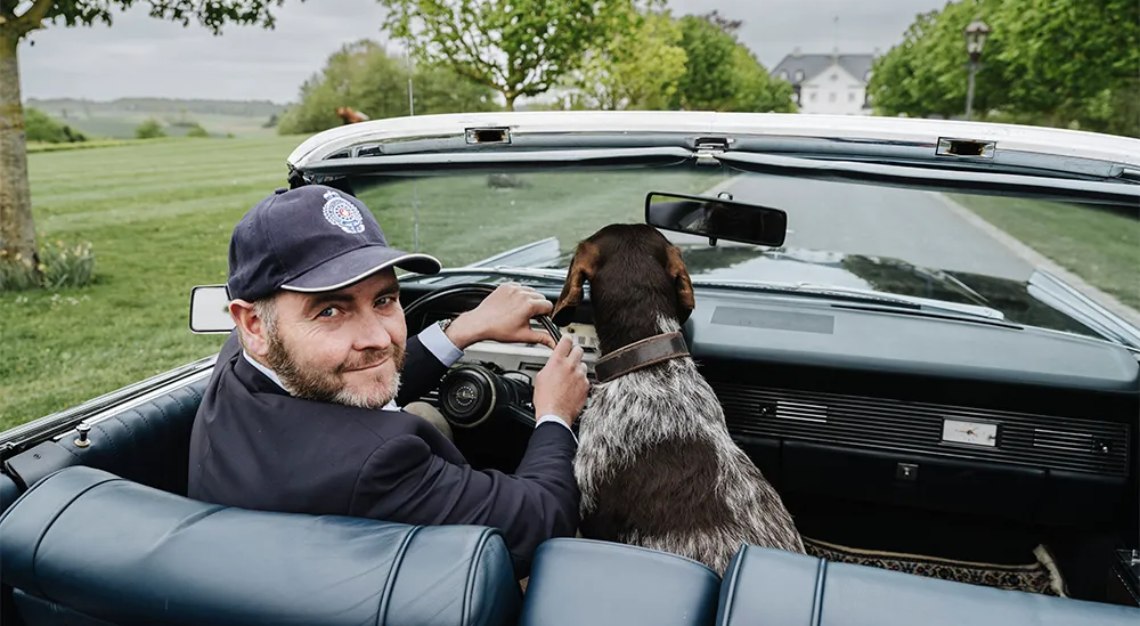
Kirk Johansen has those, too, of course. There’s a Rolls-Royce Cullinan and a Mercedes-Benz G-Wagen parked outside the main house and a US$1.8 million (before Danish taxes) Mercedes-Maybach G 650 Landaulet in the garage alongside a Bentley Mulsanne sedan that was delivered to Kirk Johansen before the queen of Denmark received hers. But there’s also an early-’90s Mazda Miata, tiny and perfect, and a cheesy ’80s Cadillac stretch limo that he bought in the U.S. for just US$7,000—but shipped home at considerably greater cost—because it’s exactly the same model and colour as a toy he had as a child, which now resides on its dashboard. When his daughters want to go to Legoland, back near the airport, they take the Cadillac.
“We had events here, and a little club for friends with interesting cars, and those friends were asking if they could store cars here,” Kirk Johansen says. “We were doing some Porsche restorations at Rohden and needed more space for that. We could have built another garage here, but it would have spoiled the symmetry of the place. We wanted to do something similar but on a bigger scale and without ever being snobby. And that’s kind of where My Garage came from.”
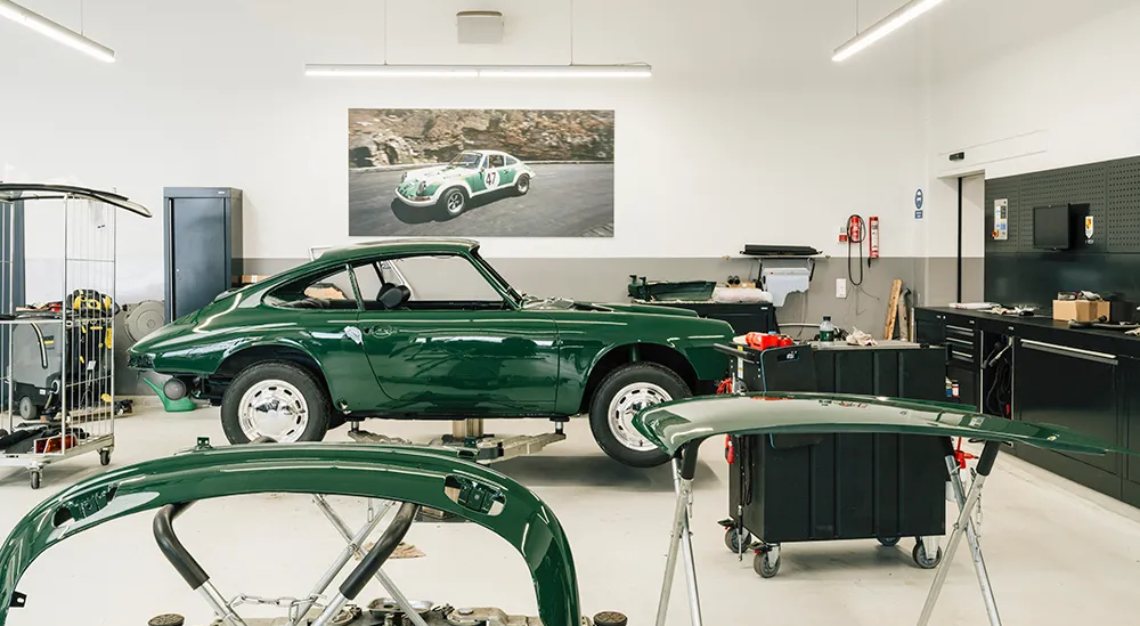
That’s where we go next, Kirk Johansen leading the short drive in his Ferrari 812. I know we’re getting close when a Porsche 911 Turbo and a perfectly restored vintage Mini appear ahead of us, standing out amid the nondescript Danish traffic and clearly heading to the same place.
The chain of low, stylish but unassuming buildings that My Garage now occupies began life as a carpet factory, whose domed, skylighted ceilings arch over the main showroom. “I’d been driving past it every day for two years, noticing that it was for sale and wondering who would buy it, when I decided to,” Kirk Johansen says. “It was perfect for My Garage.”
You enter past a hyperreal, life-size sculpture of a security guard by American artist Marc Sijan from Kirk Johansen’s personal collection to access an ever-changing automotive museum in which the exhibits are all being sold, worked on, stored, or driven—and one the public is welcome to wander through freely. The approach is similar to that taken at Fjordenhus, Kirk Johansen’s family’s office on the waterfront in Vejle, from which Kirk Kapital’s billion-dollar investment fund is managed. The first building designed by Icelandic Danish artist Olafur Eliasson, Fjordenhus features a ground floor that is open to the public and houses a display of Eliasson’s art. Fjordenhus stands opposite a hotel, Kirk Suites, which the clan also built. Enzo & C, an excellent Italian restaurant there, is co-owned by Kirk Johansen’s brother and displays a Ferrari Testarossa from the family collection. The dynasty’s influence on the area—building the airport and Legoland and maintaining a large manufacturing base despite cheaper options overseas—is readily apparent, as is its commitment to democratic public access.
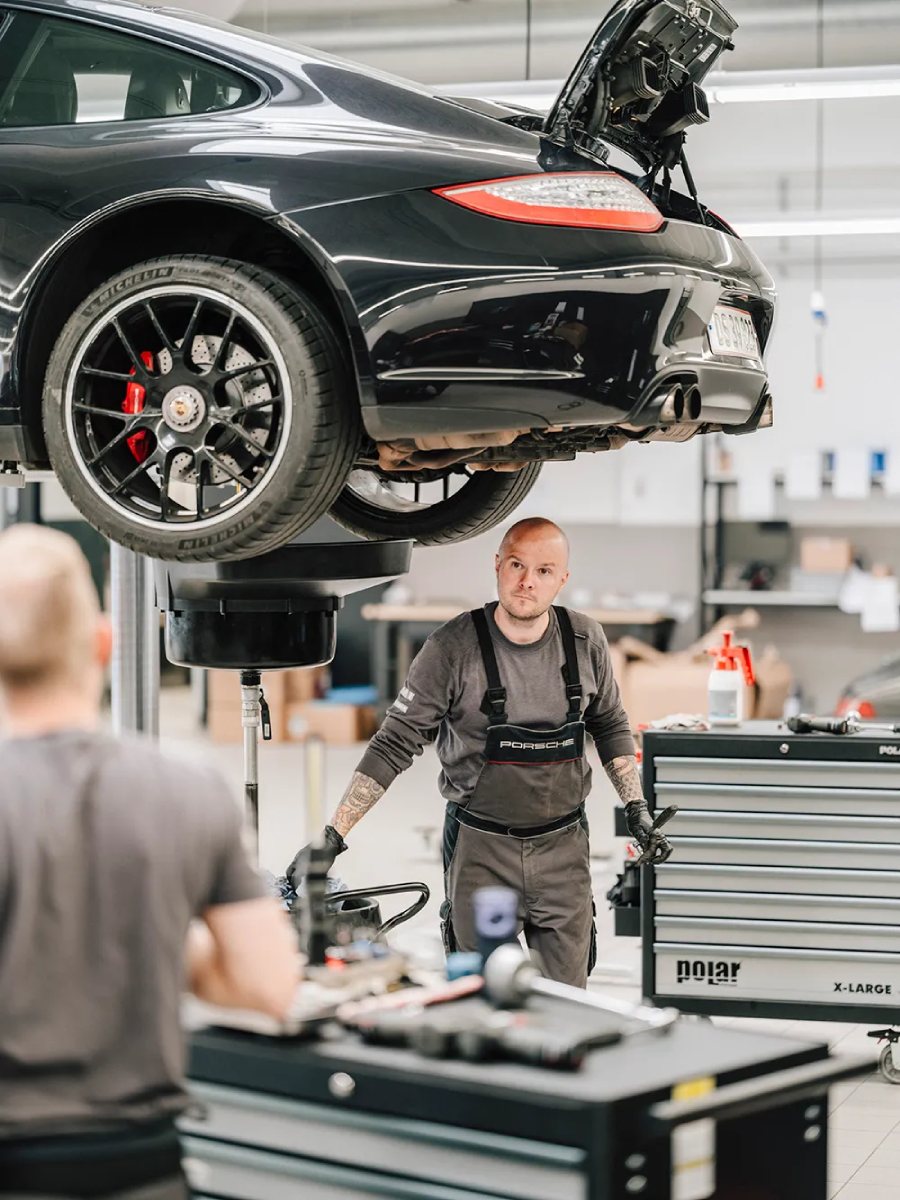
And what vehicles the public can see at My Garage. Over here is an extreme, modern, bare-carbon-bodied Dallara Stradale sports car; there, a 1958 Porsche tractor and a banana-yellow 1990s Volvo T-5R station wagon. Kirk Johansen’s own cars add to this mad kaleidoscope: In one workshop we find his Panther amphibious car, a 300-mile Volkswagen Beetle, a bespoke armored Range Rover built in the 1970s for Juan Carlos, the former king of Spain, and the bare shell of Kirk Johansen’s grandfather’s Mini, which is undergoing a full restoration.
Even the highest-end classic-car dealerships and workshops can sometimes feel like they’ve out-grown their spaces, but here there’s no crowding.
The walls are adorned with oversize, expertly curated images from motorsport’s most glamorous eras. Like Kirk Johansen’s private garage at the Rohden estate, everything is done exceedingly well.
Despite modest aims at the outset, My Garage has expanded to provide nearly everything that the owner of an exceptional car—or a collection of them—might need. Its double-stacked glass display cases are its most distinctive visual feature and are mostly rented by private clients for an extremely reasonable US$360 per month per box, which holds one car. Their vehicles become part of the theatre of the place, with everything from F1 cars to modern hypercars to vintage Rolls-Royces on display, with gallery-style descriptions on each vitrine and many visible from the road outside.
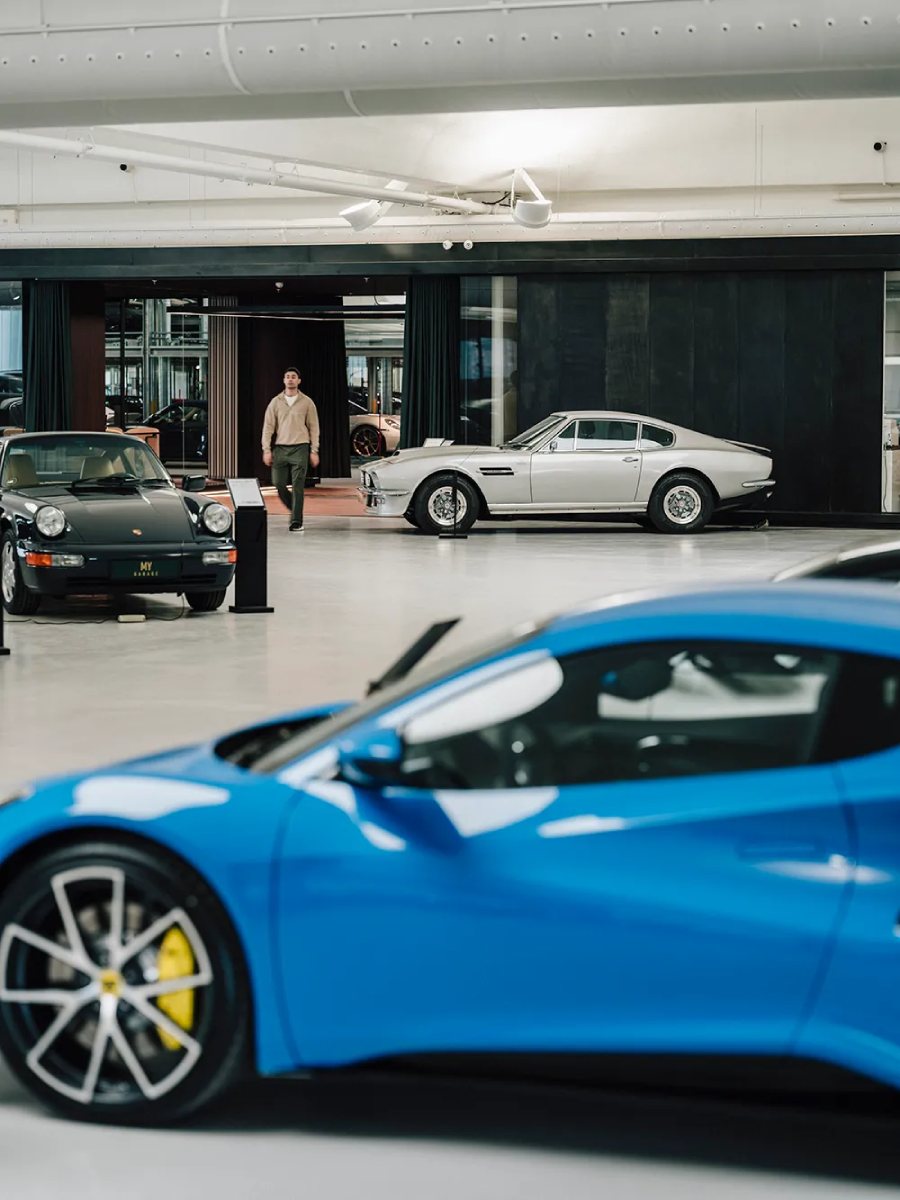
A car can be removed from its glass box and repaired, maintained, detailed, and prepared for a drive without ever going outdoors. Entrepreneur Kasper Gissel lives a five-minute drive from My Garage and has stored up to three cars there since 2019, with a perfect 1968 Rolls-Royce Silver Shadow currently on display. Why house vehicles here when he could keep his cars in his own garage?
“It’s heated here, for a start,” he says with a laugh, “and Denmark gets quite cold in winter. But it’s really the convenience. Why not spend a little more money to be able to spend more time enjoying the cars? If it needs work, they can either do it here or they’ll know a guy. And when I want to drive it, it’s always ready and can be taken out of the box with about 15 minutes’ notice. It’s never a problem, because a lot of the cars here are investments and don’t get driven.”
In addition to authorized workshops for Porsche, Ferrari, Maserati, and BMW, My Garage operates new-car dealerships for Rolls-Royce, McLaren, Lotus, Morgan, Dallara, and Kalmar. It also has an impressive selection of pre-owned and classic cars for sale; its late-model, high-end Porsche offerings are particularly well-curated, despite the boss claiming he’s not a Porsche guy. There are independent dealers here, too, including an official Ferrari and Maserati concession and another selling more affordable classics of all marques. They might be rivals for My Garage’s own retail sales, but Kirk Johansen has granted them leases in order to broaden the facility’s automotive ecosystem, which also includes painters, detailers, and racing workshops.
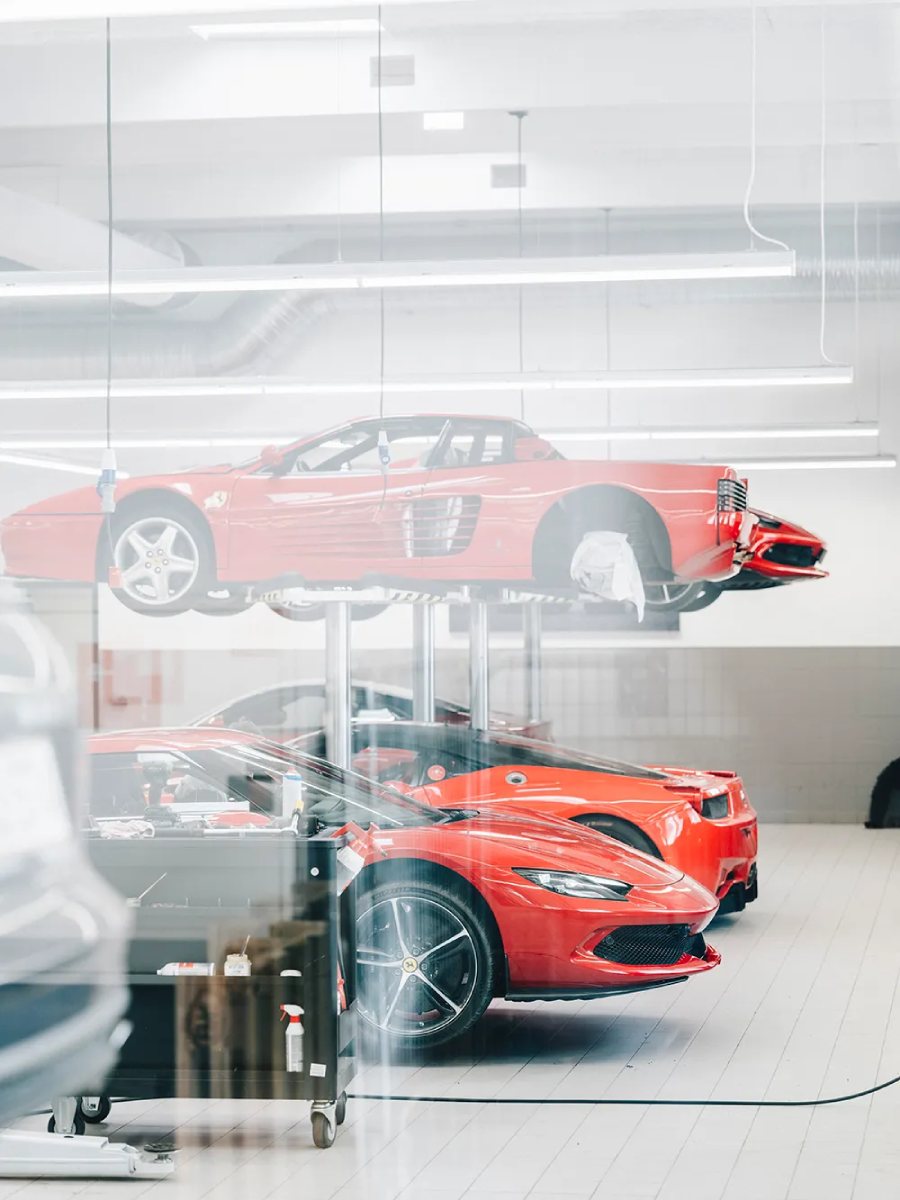
“On any given day, we’ll have multiple visitors who are worth US$50 million or US$100 million, and we’ll have a billionaire or two every week,” says Per Madsbøll Pedersen, who owns My Garage’s wine merchant, Wine Mage. “As a tenant, you can only hope to get into a place like this. The network here is unique in Denmark and probably in most of the world.”
“Vejle is a hub,” he adds. “Everyone in Denmark passes through at some point. But we also have one of Denmark’s biggest concentrations of wealth here. My business could easily live off the people in our backyard.”
Madsbøll Pedersen believes that Kirk Johansen gave the lease to his start-up rather than to an established fine-wine seller just to help a new business. “I told him I want to build one of the biggest brands in the world,” he recalls. “He likes the idea of building big businesses—I guess it’s in the family. If I’d have been a normal company with no big plan, he wouldn’t have been interested.” Madsbøll Pedersen adds that watching Kirk Johansen make a success of the place has been gratifying. “A lot of people thought, ‘This guy inherited his money and he’s not going to be able to build this.’ It’s so nice to see them proven wrong.”
The enterprise isn’t entirely unique: The Classic Remise centres in Berlin and Düsseldorf, housed in spectacular old tram and train sheds, respectively, probably come closest to the concept. But they don’t quite have the intimacy of My Garage, its range of services, or the sense of almost pastoral care for clients’ cars. Owning a superfluous car ought to be fun, but it’s often a pain in the ass. My Garage makes all the attendant obligations easy and convenient.
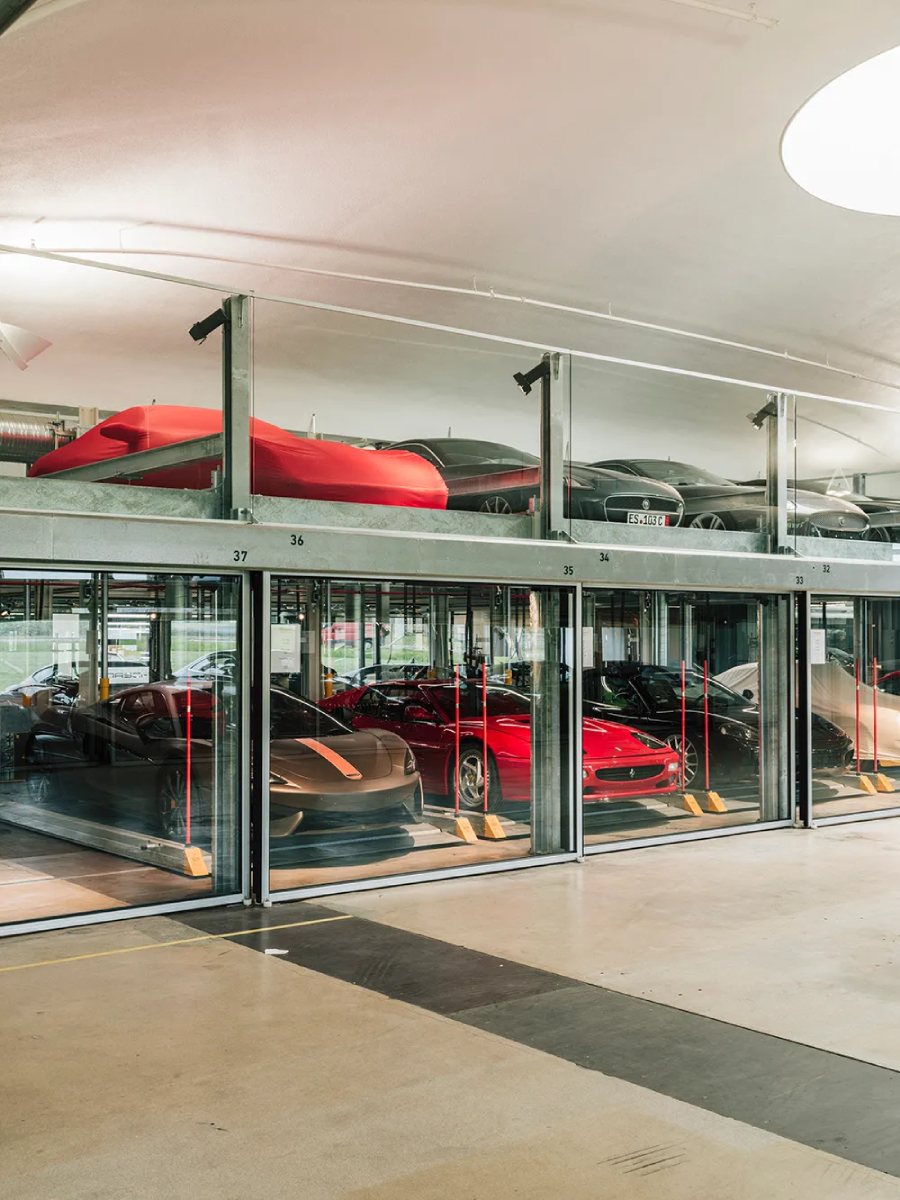
And it seems set to keep growing. Kirk Johansen has permission to expand My Garage’s footprint to about 70,000 sqm. More auto businesses will come first and then more vehicle storage, with a 16-story tower adding 120 glass boxes to the 96 already installed. He has also been approached to create plans for a hotel, restaurants, private banks, and watch dealers, all of which are under consideration.
If you mourn the fact that there’s nothing quite like My Garage near you—to help you spend less time administering to your cars and more time enjoying them—your despair may soon be over. Kirk Johansen is in discussions to franchise his concept and his brand in places with more obvious displays of concentrated wealth and where interesting cars don’t suffer such punitive taxation. If his idea works here, just think of how it might fly in, say, Miami or Monaco.
